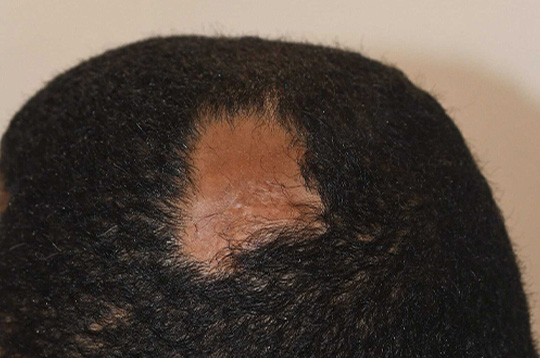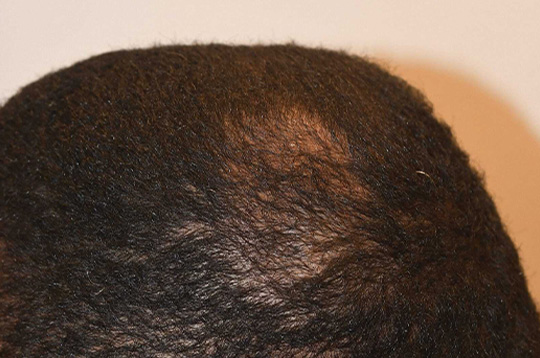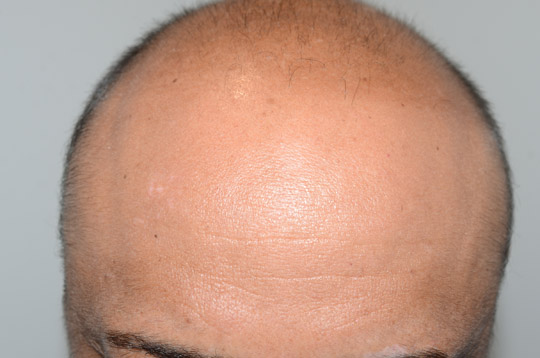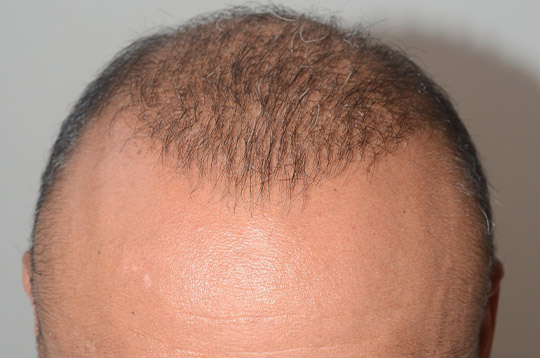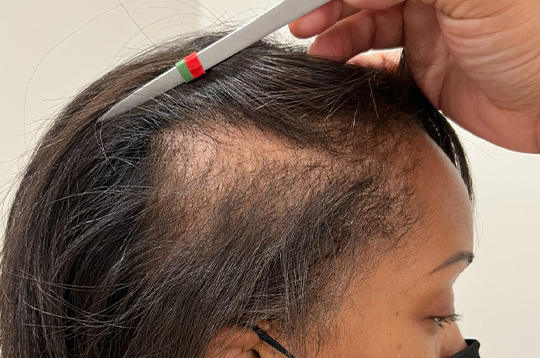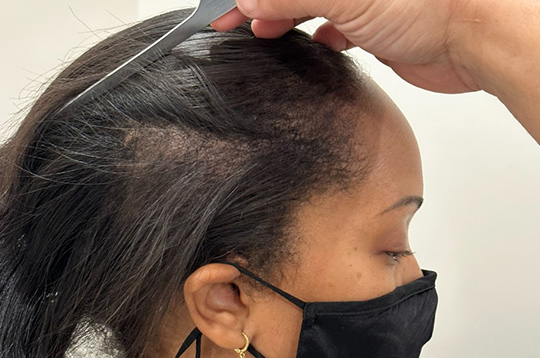Healthy-looking hair is important to both men and women. To restore hair that has fallen out due to biological or environmental damage, advanced treatments are now available. Current hair transplants are safe, effective, and use the patient’s own hair for a totally natural look. But how do transplants work?
How It Works
ACTUAL PATIENT
How Hair Transplants Work
Since the 1950s, there have been dramatic advancements in hair restoration technology. There are now several ways to transfer hair using different transplant methods. Hair plugs, one of the older techniques available, are now primarily used for bald spots. This hair is typically transferred from one area of the scalp to another. A hair plug is a type of implant that carries eight units of hair. This round grouping of hair follicles is inserted into the scalp.
While hair plugs do produce natural hair growth, the results do not usually look real. This is due to the size of the plug and the gaps that form between each grouping.
A newer hair transplant procedure is now used much more frequently than hair plugs. The Follicular Unit Extraction (FUE) technique provides natural hair growth that looks authentic and can last for a lifetime. It is widely used by surgeons today for its many benefits.
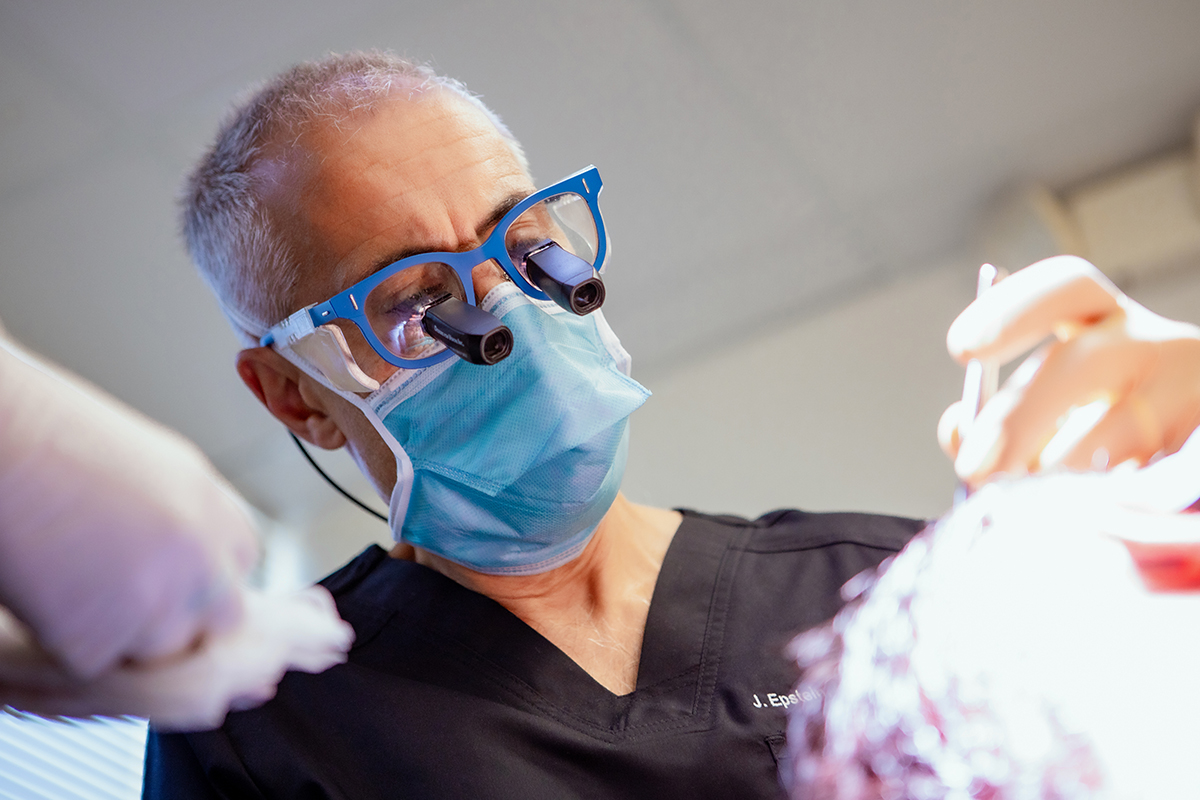
Precision Hair Transplants
By using micro punches, Dr. J. Epstein can extract a single follicle group from the donor area to transfer to the scalp. This leads to a natural look with no plug outlines or bumps. The term “transection” refers to the success of an FUE hair transplant. A transection rate measures the hair follicles that are damaged from the removal process. A low transection rate indicates an effective outcome. Many transection rates are under 5%. Another hair transplant technique also provides long-lasting results but may have additional side effects. The Follicular Unit Transplantation (FUT) uses a strip of donor skin that is usually extracted from the back of the scalp. Due to the nature of this process, individuals are left with a linear scar where the strip of skin used to be. Although the hair transplant process is effective, this procedure is not as commonly used as FUE as it limits hairstyle options and requires more recovery time.
Hair transplants work the same for women as for men. By extracting hair from a donor site, hair follicles can be successfully transferred to the scalp. With hair restoration, hair can be brushed, styled, and washed without concern. Forehead reduction surgery for women is also available. This procedure involves lowering the hairline for women with, especially high foreheads. While receding hairlines are a treatable condition, forehead reduction surgeries for women work best when the forehead has always been large. The hairline can be lowered by up to two inches. General anesthesia is used during this process and the whole surgery takes approximately two hours. Women who are interested in lowering their hairline are advised to see a specific hair transplant specialist. Regardless of gender, hair transplants are effective and natural-looking for any type of hair.
How Effective are Hair Transplants?
Hair transplants are an effective way to achieve long-lasting hair growth. The results are natural because the individual’s own hair is used. Modern transplants such as the FUE procedure also have fewer side effects. Both men and women with hair transplants can enjoy all the same activities without worrying if their hair will fall out.
The full results of a hair transplant can take several months. This hair growth is fully natural and will follow the newly-created hairline that was specifically designed for the individual. After the initial first few weeks, hair will stop shedding and start growing to its full potential.
Hair Loss Concerns We Can Treat
Hair transplants can help patients with a variety of hair loss conditions. There are numerous causes for hair loss in addition to the natural aging process.
Hair loss can occur anywhere on the body and for a variety of different reasons. One of the most common issues is male-pattern hair loss. This can happen due to natural aging or genetics. For patches of hair loss, receding hairlines, and unwanted hair thinning, hair transplants are a successful treatment for men and women.
Hereditary hair loss is a common issue that the FUE procedure can help resolve. Women with hereditary baldness or hair thinning may feel especially concerned about their hair growth. Female pattern baldness is one hereditary cause for hair loss that can become an issue at any age.
Untreated thyroid conditions can also cause hair loss. The FUE procedure is known to help those with severe hypothyroidism. This type of hair transplant creates even thickness for hair that looks healthy and full.
Forehead reduction surgery is available for those who are concerned about their facial proportions. This procedure is used to lower the hairline by bringing it forward. Men and women who want to balance the symmetry of their facial structure choose this option to create a smaller forehead.
Hair loss conditions may look different depending on the individual. Patients are encouraged to schedule a consultation to understand the cause of their hair loss and to get a customized treatment plan. An initial consultation also allows patients to discuss any questions or concerns prior to treatment.
What Is The Procedure Like?
A hair transplant surgery typically takes five to eight hours. At the beginning of the procedure, a medical specialist may wash the scalp before shaving a specific area. Once the surgery begins, the surgeon will start removing follicles from the donor site. Anesthesia is given before the procedure. Patients are advised to have a friend or family member drive them home. Because of the sedative, it is not safe to drive after any type of hair transplant. Prescriptions for antibiotics may be necessary at this time. During the hair transplant, Dr. J. Epstein removes individual hair follicular units from the donor site. This could be the back of the scalp or another area of the body that has dense and healthy hair.
Once hair follicles are extracted, they are placed using specialized instruments for precision. A microsurgical needle is used to implant the follicles. Once the area is punctured, grafts are inserted at the correct angle. This will help create a natural look so the new follicles will match the existing hair pattern. Once the procedure is over, aftercare instructions are discussed. It takes approximately one week to recover from an FUE hair transplant. Follow-up surgeries are not necessary for this type of hair transplant.

ACTUAL PATIENT
FAQs
WHAT CAN MAKE A HAIR IMPLANT GO BAD?
Hair transplants are not for everyone. There are certain types of hair loss that may not benefit from the FUE procedure. Hair transplants are not recommended for individuals with alopecia.
Alopecia is a specific type of hair loss condition that is caused by the immune system. Hair is essentially lost due to the body flagging it as an intruder and attacking it. Alopecia may cause hair loss on the scalp as well as the rest of the body. Hair will not grow in these areas regardless of a hair transplant.
Before hair grows to its maximum capacity, individuals are not advised to use additional hair growth products. This can include hair cream, spray, or specialized shampoos. Minimizing the number of chemicals that come in contact with the scalp is ideal for a recent hair transplant.
Hair transplants are not recommended for those with severe hair loss. Large bald spots may be difficult to cover. It is preferable that the patient has some scalp hair in order to receive the best hair transplant possible.
IS THE HAIR TRANSPLANT PROCEDURE THE SAME FOR EVERYONE?
There are many causes of hair loss and depending on the person, each treatment may look different.
Some hair loss is caused by medications or medical conditions like thyroiditis. Natural causes can include genetics and aging. Hair patterns that may impact which type of hair transplant is used include male pattern baldness and receding hairlines. Androgenetic alopecia usually runs in families and can affect whether a FUT or an FUE procedure is best.
Although the results of the hair transplant may depend on the type of procedure and the patient’s lifestyle and health condition, the FUE surgery is performed in the same way every time. FUE procedures are widely effective and cause minimal downtime. Because of its consistent accuracy and success rate, this form of transplant is used the most.
HOW DO OTHER ALTERNATIVES COMPARE TO THE SURGICAL APPROACH?
Non-surgical treatments are available for those with hair loss. Hair sprays can be purchased over-the-counter as well as wigs and hairpieces. These are not permanent solutions for hair loss but can be a quicker solution than waiting for hair to grow.
Instant hair products
Scalp dyes and hair concealers are designed to camouflage hair loss. These products are typically used for bald spots rather than receding hairlines. Scalp dyes are a temporary solution that can be used on the crown and temples to create the illusion of volume.
Hair growth shampoos
There are two main types of hair growth shampoos. Over-the-counter products and prescription products are used by both men and women.
While many people assume these shampoos are essentially the same as mainstream hair products, they consist of strong chemicals. Hair growth shampoos are designed to be used on a routine basis to remain effective and may cause side effects.
Hair growth creams, sprays, and shampoos do not usually work for advanced hair loss. Most people who find success in these types of products have minimal hair loss or are in the beginning stages of hair thinning. Hair transplants are the most effective and permanent hair growth solution.
HOW LONG DO HAIR TRANSPLANTS LAST?
Although hair transplants last a lifetime, the original remaining hair follicles may not. Since hair transplants are not designed as a cure for hair loss, they cannot prevent additional hair loss.
The hair that has been transplanted will continue to grow regardless of the hair around it. Men and women who want an effective way to grow their own hair are usually satisfied with its volume and longevity.
Environmental factors may also play a role in the efficacy of some hair transplants. To ensure the best results, patients are advised to choose healthy lifestyle choices. Nutrients are needed for every part of the body, including hair.
HOW OLD DO I HAVE TO BE TO GET A HAIR TRANSPLANT?
Men typically first experience hair loss in their twenties. However, it can be a good idea to wait and see how the hair loss progresses, to ensure that the transplant will be successful. Young patients may eventually need a second procedure if they do not wait.
Contact Us For More Information
Hair transplants are a permanent way to restore natural, healthy hair. If you are interested in learning more, please contact us on our website or call 305.666.5884. Foundation Aesthetic Hair Restoration is a world-renowned hair transplant practice offering incredible results to patients.
ACTUAL PATIENT
Contact Us Today
Start Your
Journey
Have questions? Reach out today
for answers and more information.
